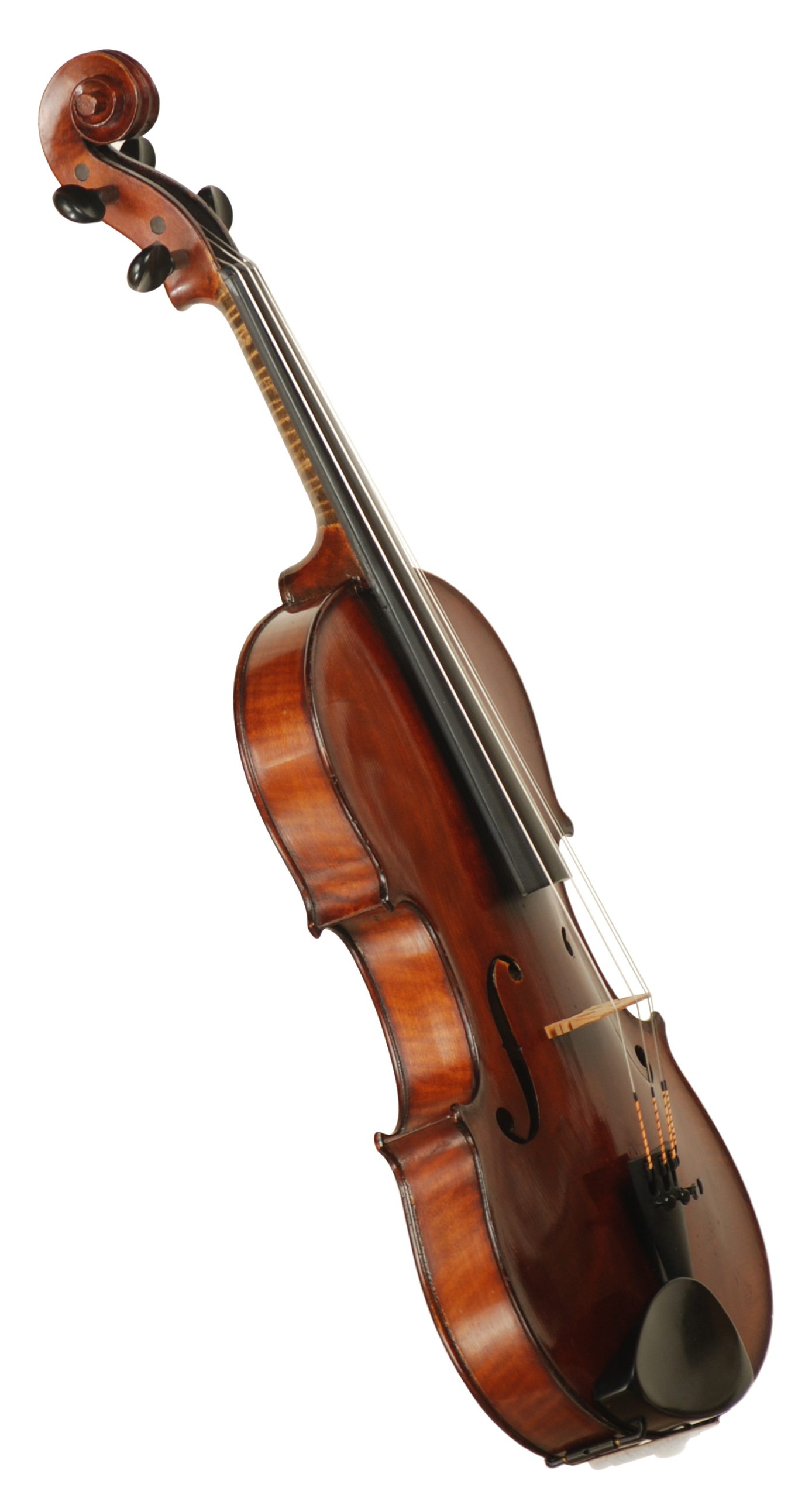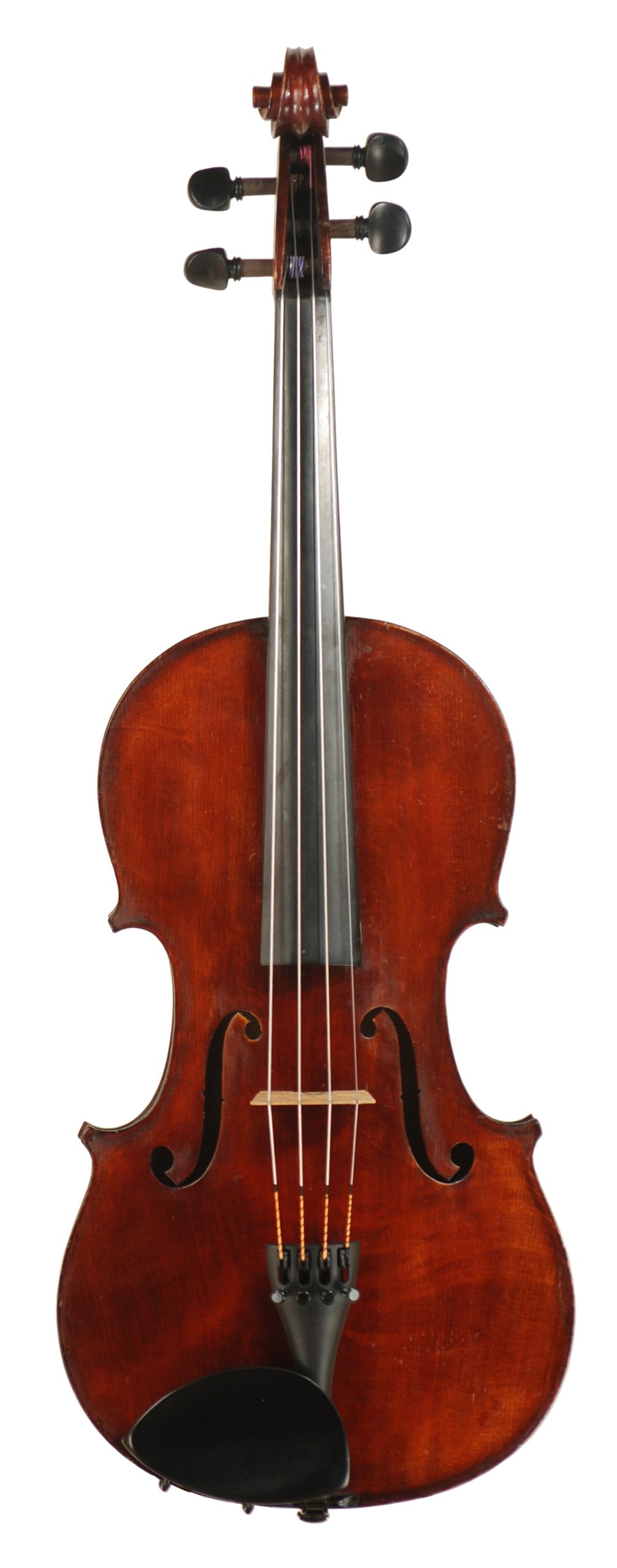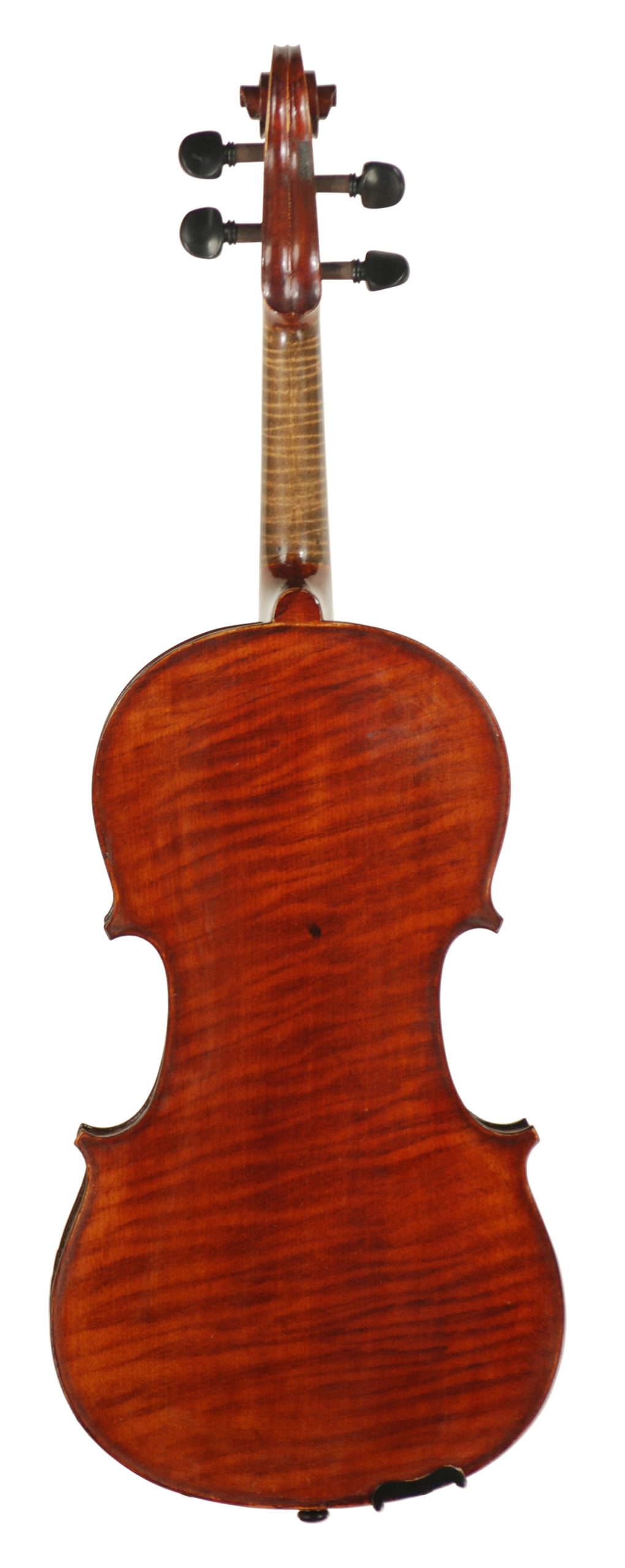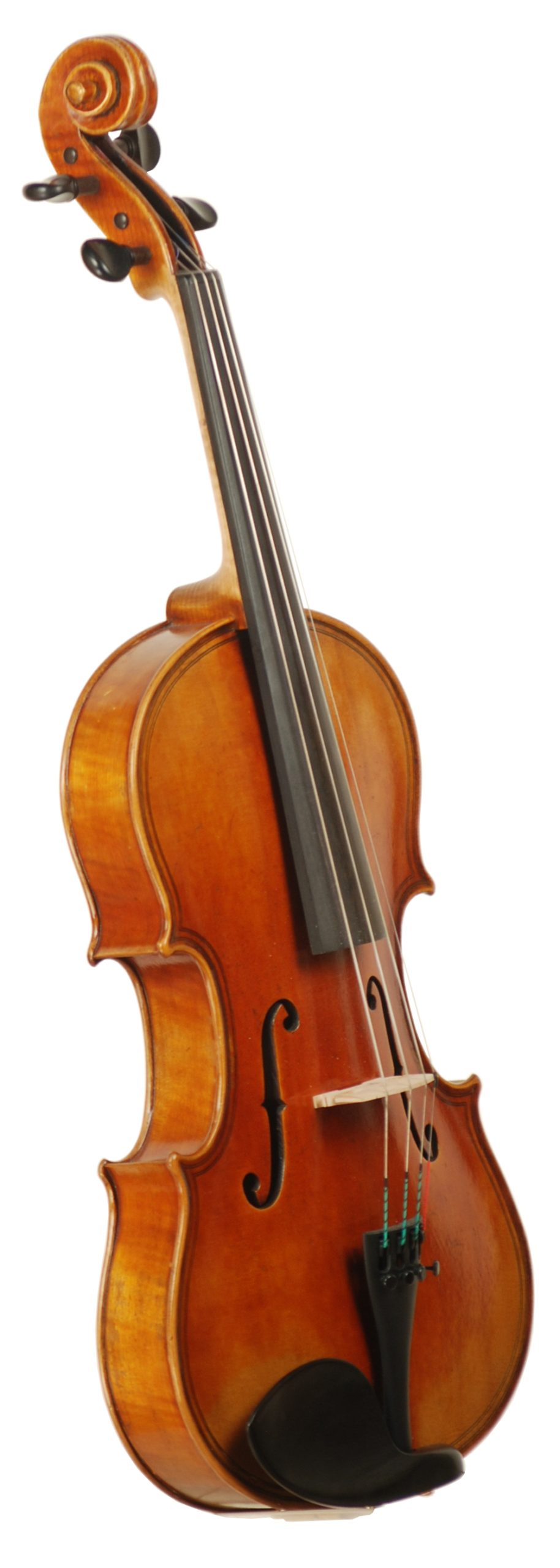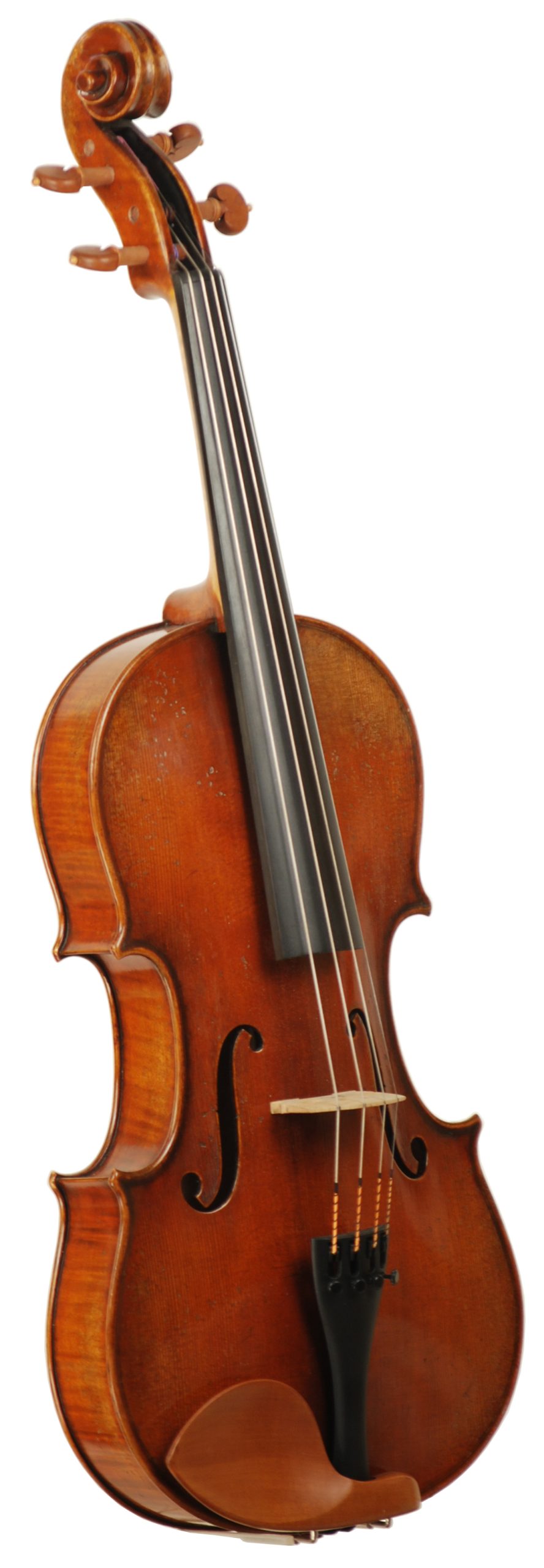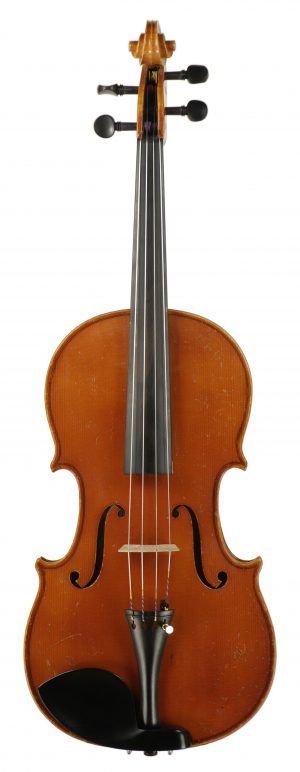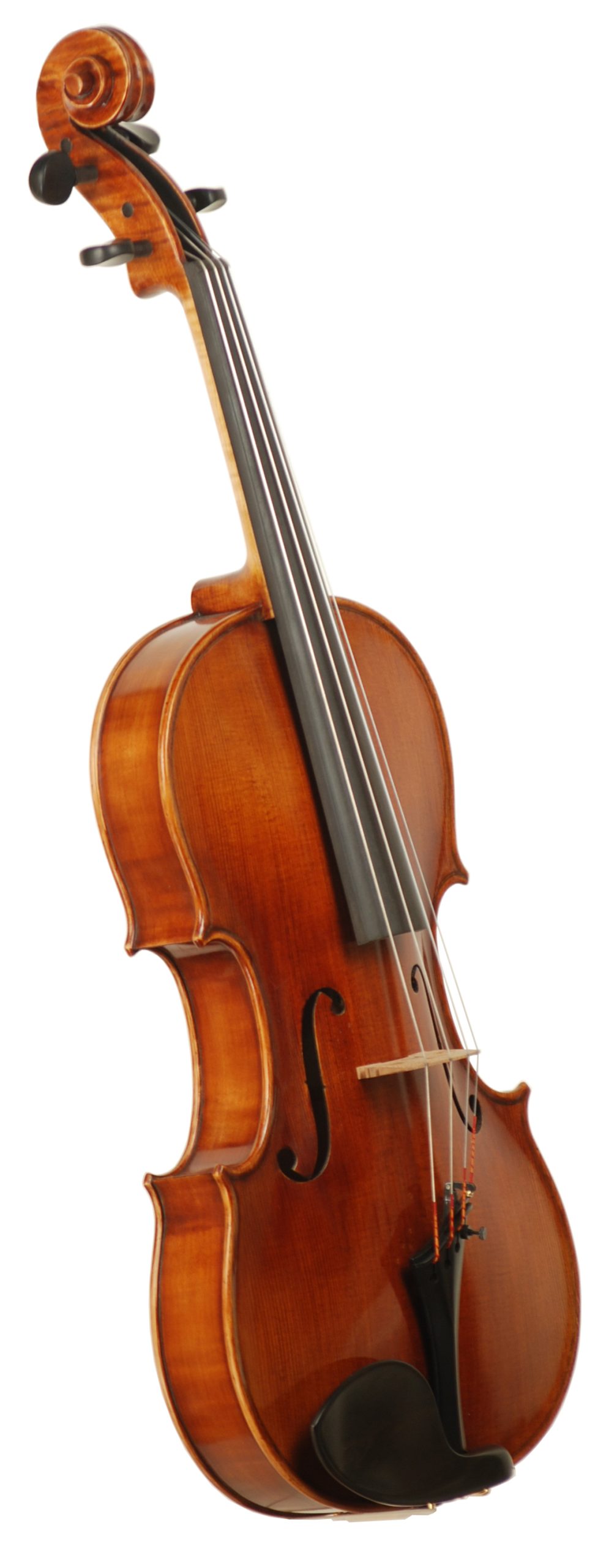Jérôme Thibouville-Lamy Workshop 15 5/8” French Viola Mirecourt circa 1910
$5,600.00
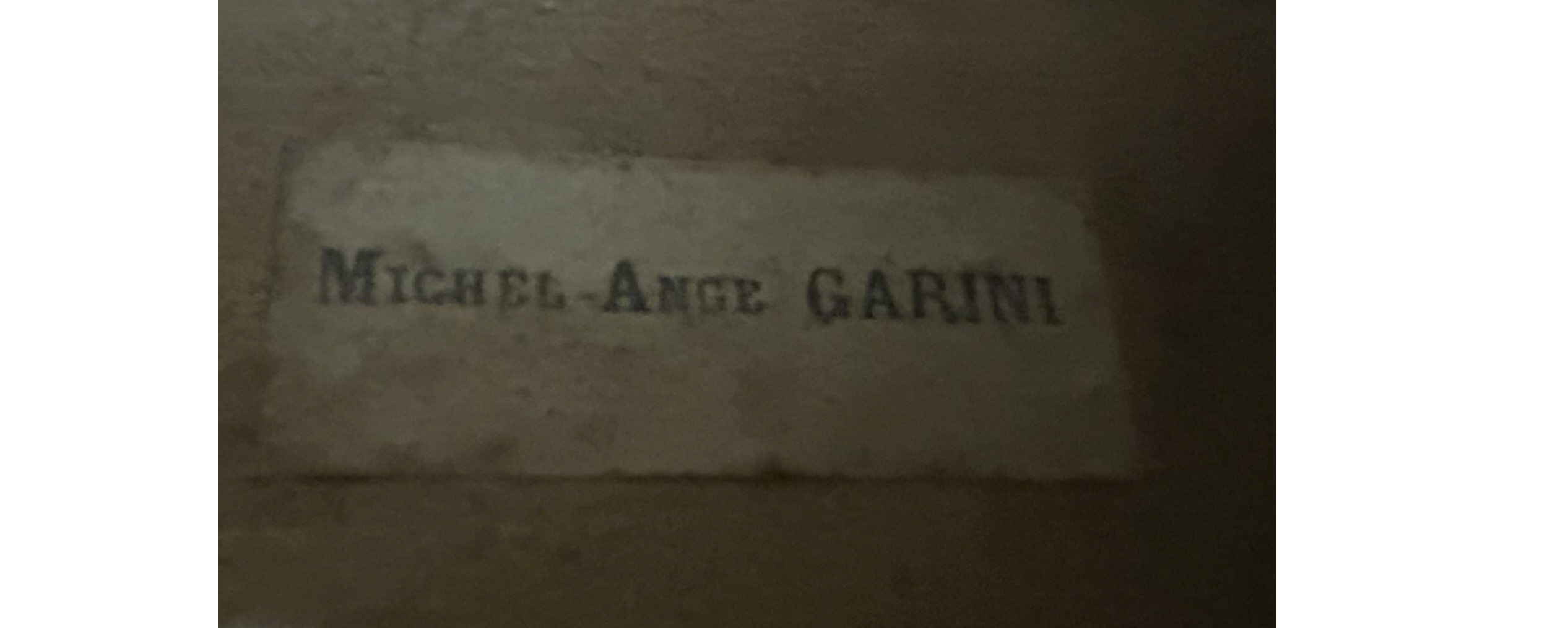
Label:
We have a French viola from the Jerome Thibouville Lamy workshop circa 1910 labeled Michel-Ange Garini. This viola was built in the early 20th century in the renowned workshops of Jérôme Thibouville-Lamy (J.T.L.) in Mirecourt, France. Violin making had its start within Thibouville-Lamy in 1834 when Charles Buthod, one of J.B. Vuillaume’s sub-contractors, came back to Mirecourt to open a violin workshop. Charles Buthod established his workshop, whose production was sold in France and abroad. In 1848 he joined with Charles-Claude Husson, under the name of Husson-Buthod, and in 1857 they were joined by Louis Emile Jérôme Thibouville, heir to a long tradition of instrument making. In 1866 M. Jérôme Thibouville became the owner of the company which in 1867 became Jérôme Thibouville-Lamy (Lamy, after his wife’s’ name). The JTL firm closed its doors during two World Wars but made a valiant effort to start back up, and finally the business ceased in 1969.
The Michel-Ange GARINI label was a JTL assigned name. JTL has several labels they used to market their instruments. There were over 18 different assigned label names used in the JTL company. Some famous violin makers were trained and worked in the JTL workshop over the century: Joseph Aubry, Maurice Bourguignon, Georges Cherpitel, Pierre Claudot (1920-1922), Marius Didier Charles, Claude Fetique, and Paul Kaul. They also employed a few famous bow makers such as J.J. Martin and Husson. The company peaked in its production of instruments in one year, making 150,000 instruments. The Michel-Ange Garini instruments were actually made in a smaller workshop in Voges but distributed by the JTL Company. They are easily recognizable by their attractive deep red wine color spirit varnish and highly flamed wood.
The viola has a gorgeous one-piece highly flamed maple back. The curl is medium-width and visibly jumps out of the transparent varnish. The ribs, peg box, and neck also have a pronounced curl. The spruce top plate is one-piece. The varnish, all brush work, is a red/brown almost burgundy wine color, all on a yellow ground. It’s interesting to see a French viola from this period slightly larger than standard size violas. A little over 15 1/2 inches. The question for a maker is always “how to make a smaller viola easy to play and sound great.” The size of this instrument is a very nice compromise. The viola is completed in ebony fittings and has a Wittner tail piece. We cut new ebony pegs, a new soundpost, and a maple French Despiau Grade B bridge. These bridges are cut from 200-hundred-year-old trees. The viola is in very good condition, no issues and is set up with Evah Gold strings.
Corpus 397.0 mm or 15 5/8”
Lower Width 230.0 mm
Upper Width 188.0 mm
Width middle bout 126.0 mm
Vibrating String Length 359.0 mm
The sound on this instrument is very responsive, smooth and rich, almost creamy like butter. The sound has a satisfying resonance with a very nice feel to the strings under your chin. The viola has some guts but nothing that takes away from the warmth or maturity. The sound is refined and full of life. Beautiful for a smaller viola. It’s a fantastic instrument for an orchestra player and a great player for the person looking for a distinctive voice but one which will still blend into a group.
